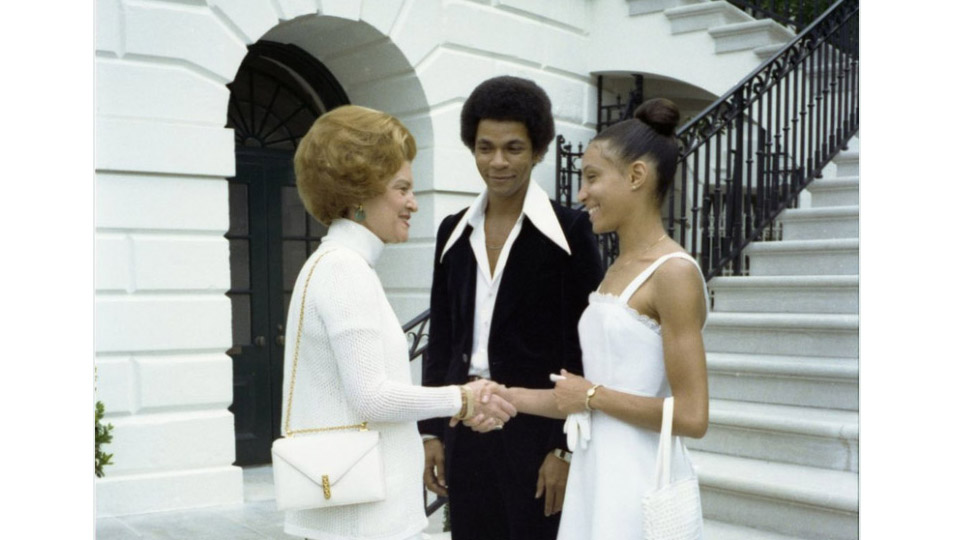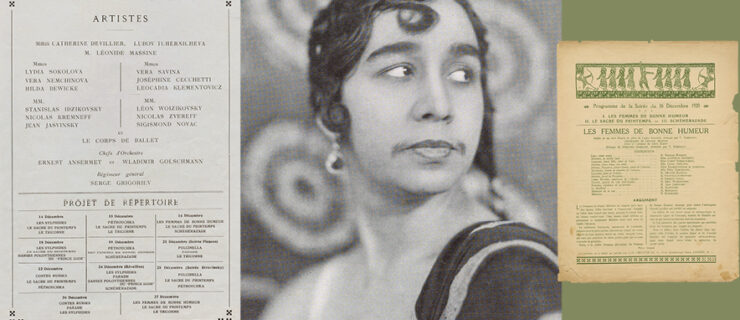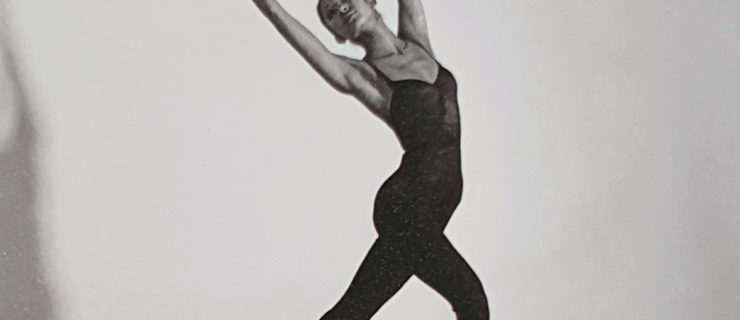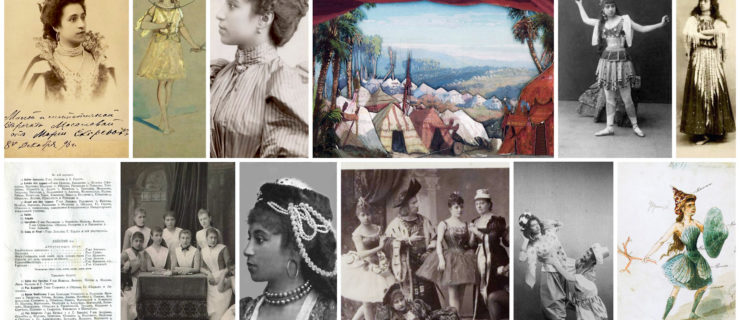Sandra Fortune-Green, Capitol Ballet Ballerina Who Represented U.S. in Varna and Moscow, Impacts Future Generations Through Teaching
Sandra Fortune-Green is proof that success is not always immediate, but perseverance is lasting. In 1973, at the age of 22, she began training diligently for the second Moscow International Ballet Competition. She was the only American candidate that year—and she says she is to this day the only African American dancer to compete at the Moscow IBC. At the time, Fortune-Green—a star student of Doris Jones and Claire Haywood, of the renowned Jones-Haywood School of Ballet in Washington, DC—was a leading dancer with the Jones-Haywood–affiliated Capitol Ballet. Fortune-Green’s participation in the competition was so important that President Nixon and First Lady Pat Nixon attended one of the fundraising concerts to support her and her dance partner Clover Mathis, of the Alvin Ailey American Dance Theater.
Fortune-Green completed the first two rounds in Moscow but did not have enough points to advance to the final round. “With no prior exposure to a raked stage, I had a lot of challenges,” she says. But, she adds, “there was something about the grit and the perseverance that Ms. Haywood and Ms. Jones instilled in us—there was no room to quit.”
Sandra Fortune-Green would go on to compete at the Varna International Ballet Competition twice—advancing to the finals both times—and dance as a professional ballerina with both the Capitol Ballet and The Washington Ballet, and as a guest artist with the Royal Winnipeg Ballet and Santo Domingo Ballet. Later she would become a distinguished educator at Duke Ellington School of the Arts, Howard University, Baltimore School of the Arts, George Washington University, and The Jones-Haywood Dance School, which she currently owns and directs. She has impacted countless lives through her teaching and has shown dancers across the world what is possible through commitment to the art form.
Early Training at Jones-Haywood, and Balanchine’s SAB
In 1961, at the age of 10, Sandra Fortune-Green joined the Jones-Haywood School of Ballet. Founded in Washington, DC, in 1941, the school provided a training ground for Black children in classical ballet—an inspired endeavor by Jones and Haywood, who were not afforded lessons during their own childhoods due to the color of their skin. Initially, Fortune-Green preferred playing outside to taking ballet class. “Instead of coming home to get my homework started, I went across the street to play kickball. My mother had the insight to know that I needed a structured activity after school.” Though Fortune-Green initially disliked the spoken and unspoken rules of the studio experience, she eventually fell in love with the rigor and the close sisterhood that developed amongst her classmates.
In 1964, George Balanchine went to Jones-Haywood to scout for Ford Foundation scholarship recipients. He selected Fortune-Green and some of her classmates to attend the School of American Ballet for three summers. She invested herself in SAB’s training, mindful of the lessons Jones and Haywood had provided her. She remembers SAB being her first all-white experience in the art form, and dancing alongside notable classmates like Gelsey Kirkland and Fernando Bujones. “George Balanchine and Diana Adams would come to sit at the front of the room, and we were all very well coached before we left Jones-Haywood,” says Fortune-Green. “When certain people come into the studio, you get even higher on your vertical axis. We were savvy enough to know that.”
By the age of 15, Fortune-Green was performing with Capitol Ballet, the company Jones and Haywood founded in 1961—eight years before the founding of Dance Theatre of Harlem. The company was initially semi-professional and an extension of their school. They performed works choreographed not only by Jones but by Alvin Ailey, Joyce Trisler, Walter Raines, Louis Johnson, Billy Wilson, Keith Lee, and George Faison. Over the years, Capitol Ballet engaged some of the most notable dancers of color in history as professional guest artists—Arthur Mitchell, Carmen de Lavallade, Virginia Johnson, Billy Wilson, Sylvester Campbell, Hinton Battle, Renee Robinson, Chita Rivera, and Louis Johnson, to name a few. (The latter five were all alumni of the Jones-Haywood School of Ballet.)
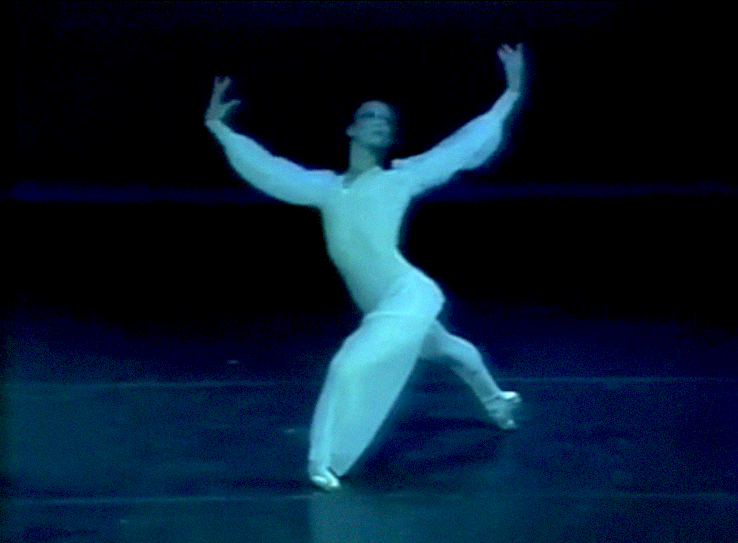
After high school, Fortune-Green entered Howard University as a liberal arts major, balancing college courses alongside her career at Capitol Ballet and, eventually, her preparations for the Moscow IBC. While her experience in Moscow was challenging, she made an impression, placing 26th out of 126 candidates. She stresses there was so much value in participating, much beyond winning or losing: “It made me better; it made me more appreciative. It made me have a better understanding from a visual, social, and artistic perspective of the discipline.”
Fortune-Green had more success with her second and third competition attempts, at the 1974 and 1976 International Ballet Competition in Varna, Bulgaria. She was partnered at each by Sylvester Campbell, a fellow Jones-Haywood alum who danced with Dutch National Ballet and as a principal with Royal Winnipeg Ballet. Both times, Fortune-Green completed all rounds and received honorable mention. To wish them well before their departure for the 1976 competition, First Lady Betty Ford invited the two dancers to the White House. In a letter to Fortune-Green, Ford wrote:
I am grateful for this opportunity to convey both my congratulations and my encouragement as you undertake this difficult but worthwhile challenge. You will indeed beautifully represent the United States and the vitality of the arts in our nation today. May your journey be successful.
A New Calling: Teaching
Fortune-Green continued to dance with Capitol Ballet throughout the 1970s. In 1978, she added a new role to her plate: teaching at the Duke Ellington School of the Arts, a DC public school. When Claire Haywood passed that same year, Capitol Ballet continued under the leadership of Keith Lee, a former soloist with American Ballet Theatre. Fortune-Green would rehearse in the mornings, leave at 1:30 to go to Duke Ellington, and return to rehearsal from 7:30 to 9 pm. The dance company, however, didn’t continue consistently.
In 1984, Washington Ballet founder Mary Day invited Fortune-Green to join her company as a dancer. She accepted the position, while continuing to teach at Duke Ellington in the afternoons. (Fortune-Green never gave up her job with the DC Public Schools, which gave her full benefits and a pension—to this day, 46 years later, Duke Ellington School of the Arts is still her home.) She wasn’t able to tour because of her teaching position, but Fortune-Green performed locally with The Washington Ballet during the 1984–85 season and loved the choreography of their ballet master, Choo San Goh.
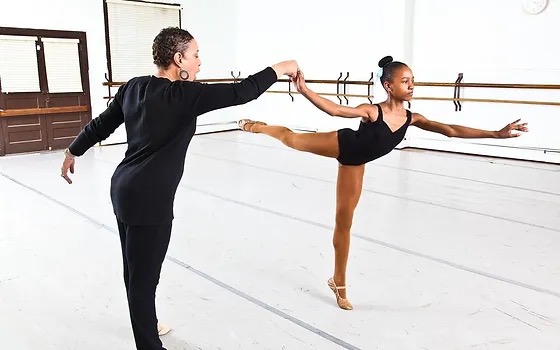
Continuing the Jones-Haywood Legacy
In 2006, upon the passing of Doris Jones, Fortune-Green and her husband purchased the school, maintaining the legacy of its co-founders. Today, she keeps multiple balls in the air—directing the Jones-Haywood Dance School and teaching ballet part-time at Howard University (where she’s been on faculty since 1994) and Duke Ellington School of the Arts. Throughout her many years as an educator, she has developed a teaching philosophy rooted in a high standard of excellence, but with a broad view of what success looks like. She insists that instructors should not teach solely to the top of class just because there may be a talented child with professional aspirations. Rather, a good teacher ensures that every student progresses to their fullest potential. Broadening the definition of dance education continues the art form and, as she says, “builds citizens in the arts”—audience members, donors, and lifelong enthusiasts.
“Dance teaches you how to work with grace, composure, integrity, take on challenges, be strong in your own truth, and to set a high standard for yourself,” Fortune-Green says. “If you are in my class, and you don’t want to be a professional, that’s fine, but you still have to get your leg up. It’s a standard.”
